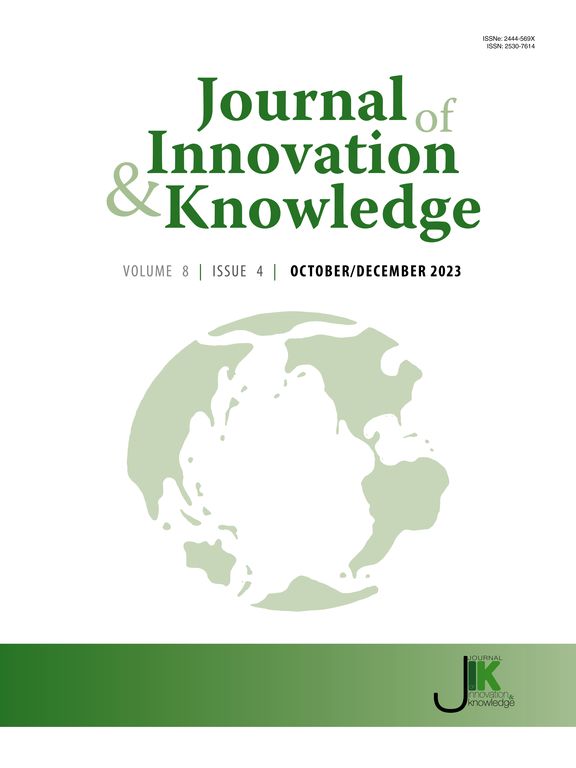数字创新、人力资本配置与劳动份额:来自中国上市公司的经验证据
IF 15.6
1区 管理学
Q1 BUSINESS
引用次数: 0
摘要
数字技术正日益模糊人与机器之间的界限,极大地影响着工人之间的收入分配。企业如何在数字化创新过程中通过优化内部人力资本配置来利用数字化进步的好处,已经成为一个关键问题。本研究利用句子- bert (SBERT)模型来识别数字创新,并从人力资本配置的角度考察其对企业内部劳动份额的影响,以及潜在的机制。研究结果如下:首先,数字创新对劳动份额有积极而显著的影响,在进行各种敏感性测试和解决内生性问题后,这一结论仍然是强有力的。第二,机制分析表明,人力资本配置变化是数字创新与劳动份额之间的重要中介因素。进一步的研究表明,技能培训作为人力资本配置的一个要素,在不同的公司规模和行业特征中表现出不同程度的影响。第三,在商业环境支持性强的地区、高科技行业和公司治理水平较高的企业,数字创新对劳动份额的积极影响更为明显。最后,对于普通员工来说,数字创新提高了他们的劳动份额。相反,对于管理层来说,虽然数字创新降低了他们的劳动份额,但它增加了他们的股权激励,这表明数字创新有助于弥合公司内部的数字鸿沟,促进更公平的利益分配。本研究不仅丰富了数字创新对劳动收入影响的理论认识,而且鼓励了数字创新在缩小贫富差距、实现共享繁荣方面的实际应用。本文章由计算机程序翻译,如有差异,请以英文原文为准。
Digital innovation, human capital allocation, and labour share: Empirical evidence from listed companies in China
Digital technology is increasingly blurring the lines between humans and machines, significantly influencing the distribution of income among workers. The question of how businesses can capitalise on the benefits of digital advancement by optimising internal human capital allocation during the digital innovation process has become a critical concern. This study utilises the Sentence-BERT(SBERT) model to identify digital innovation and examines its effects on the labour share within firms, alongside the underlying mechanisms from the viewpoint of human capital allocation. The research findings are as follows: First, digital innovation has a positive and significant impact on the labour share, a conclusion that remains robust after conducting various sensitivity tests and addressing endogeneity issues. Second, the mechanism analysis reveals that changes in human capital allocation serve as a crucial mediating factor between digital innovation and labour share. Further exploration indicates that skills training, as an element of human capital allocation, demonstrates varying levels of influence across various company sizes and industry characteristics. Third, the positive impact of digital innovation on labour share is more pronounced in regions with supportive business environments, high-tech sectors and firms with superior corporate governance. Lastly, for ordinary employees, digital innovation enhances their labour share. Conversely, for management, while digital innovation reduces their labour share, it increases their equity incentive, suggesting that digital innovation aids in bridging the digital divide within firms and fosters a more equitable distribution of benefits. This study not only enriches the theoretical understanding of the effects of digital innovation on labour income but also encourages the practical application of digital innovation in reducing the wealth gap and achieving shared prosperity.
求助全文
通过发布文献求助,成功后即可免费获取论文全文。
去求助
来源期刊

Journal of Innovation & Knowledge
Multiple-
CiteScore
16.10
自引率
12.70%
发文量
118
审稿时长
37 days
期刊介绍:
The Journal of Innovation and Knowledge (JIK) explores how innovation drives knowledge creation and vice versa, emphasizing that not all innovation leads to knowledge, but enduring innovation across diverse fields fosters theory and knowledge. JIK invites papers on innovations enhancing or generating knowledge, covering innovation processes, structures, outcomes, and behaviors at various levels. Articles in JIK examine knowledge-related changes promoting innovation for societal best practices.
JIK serves as a platform for high-quality studies undergoing double-blind peer review, ensuring global dissemination to scholars, practitioners, and policymakers who recognize innovation and knowledge as economic drivers. It publishes theoretical articles, empirical studies, case studies, reviews, and other content, addressing current trends and emerging topics in innovation and knowledge. The journal welcomes suggestions for special issues and encourages articles to showcase contextual differences and lessons for a broad audience.
In essence, JIK is an interdisciplinary journal dedicated to advancing theoretical and practical innovations and knowledge across multiple fields, including Economics, Business and Management, Engineering, Science, and Education.
 求助内容:
求助内容: 应助结果提醒方式:
应助结果提醒方式:


